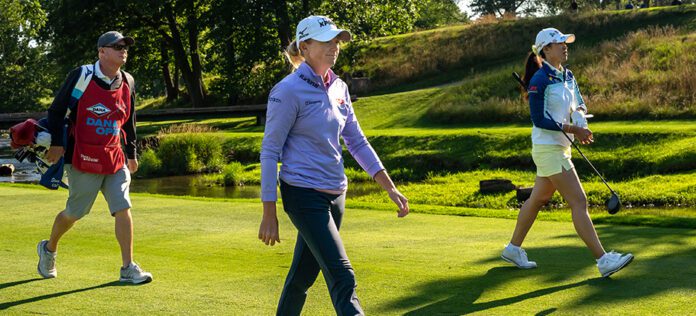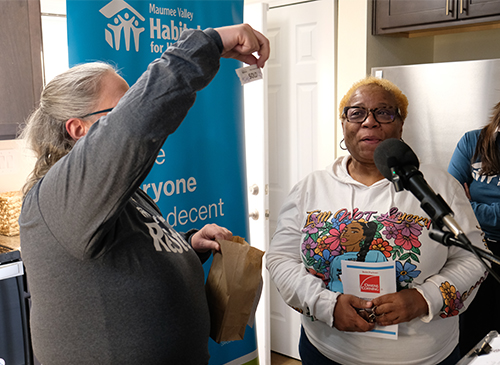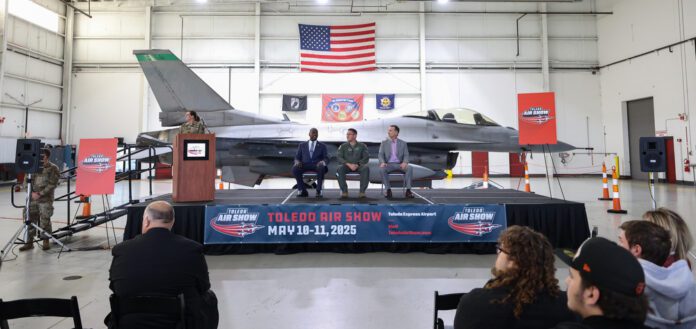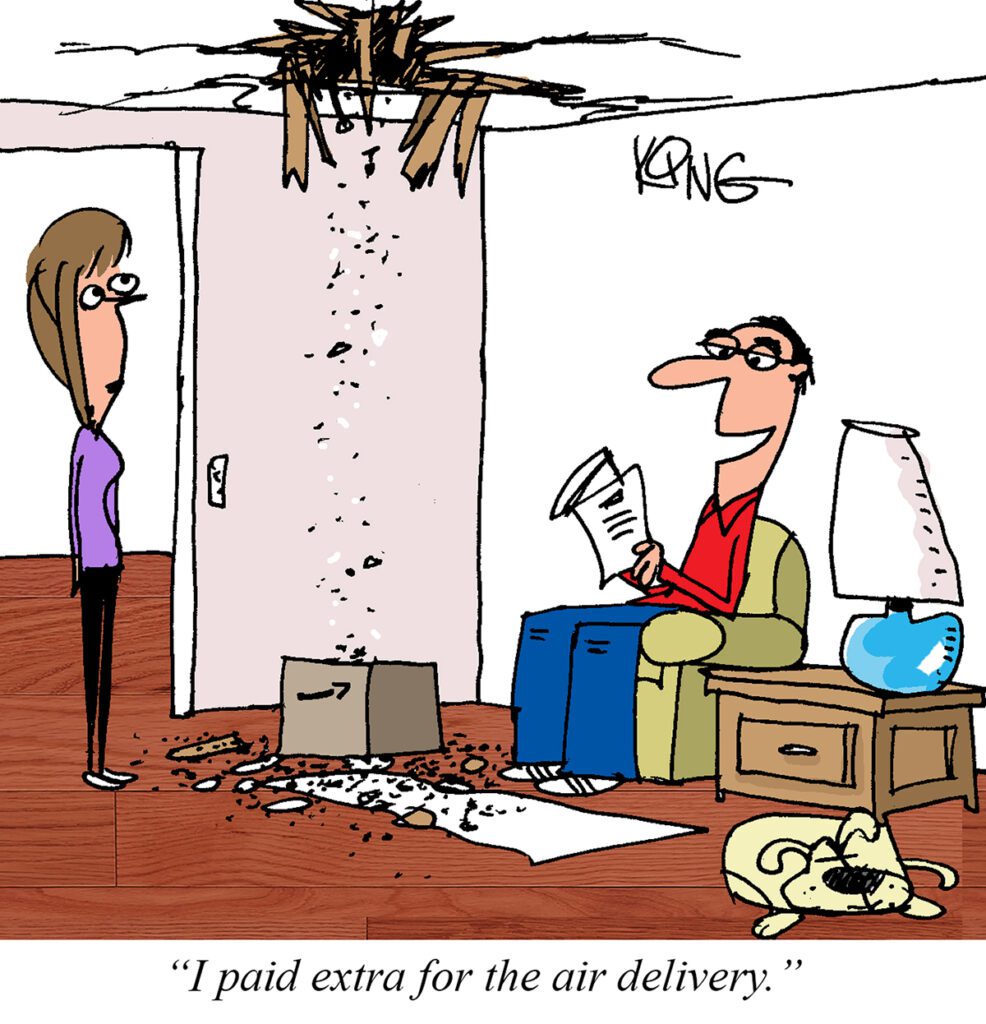Ray Chapman’s tragic story
Cleveland author’s book profiles the Toledo Mud Hen
It was the top of the fifth inning when Ray Chapman settled his 5-foot-10 frame into the batter’s box at the Polo Grounds in New York City.
The Yankees’ pitcher that day was right-hander Carl Mays, an infamous “headhunter” who was known for intentionally throwing at opposing hitters. Chapman, nearing the end of his career as the shortstop for the Cleveland Indians, knew this.
Chapman was not wearing a batting helmet. None of the players wore helmets back then. The day was Aug. 16, 1920. Less than 12 hours later, the 29-year-old Chapman, known for his speed and rifle arm, would die from a depressed skull fracture.

The fastball Mays threw hit Chapman in the temple with such force that Mays said later he thought the pitch hit the end of Chapman’s bat. Mays simply fielded the ball and threw to first base.
This tragedy has long been a part of baseball lore. To this day, Chapman, the son of a coal miner from Beaver Dam, Ky., is the only player to die in a major league baseball game.
Author Scott Longert, 70, a Cleveland native now living in Beachwood, knew parts of Chapman’s tragic story and chose the topic for his seventh book, Love and Loss: The Short Life of Ray Chapman. The book is 177 pages and was published by Ohio University Press in late August.
“I had this idea maybe three years ago,” Longert said. “I thought about Chapman for a while. Ohio University gave me a contract, and I did the research and we went from there. Chapman wasn’t born in Ohio, but he played in Toledo and played in Cleveland, so there was a good Ohio connection to it.
“Quite a bit about Chapman’s life was a rags to riches story. He played semi-pro ball and played for the Mud Hens for two years. He was considered the best shortstop in the American League.”
Chapman married Katie Daly, whose father, Martin, owned the Cleveland-based East Ohio Gas Company, the largest gas company in the country for many years.
“Katie was a very accomplished woman,” Longert said. “She went to school in Toledo, and her family had a house in the West End. They moved to Cleveland, and that’s where she met Ray. They had the perfect life.
“His father-in-law built them a home as a wedding present, and he was set at the height of his career. Life was great. He served with the Navy in World War I and probably would have gone on to great things. I just wanted to tell this story so people could learn about him and what he was about.”
One of Longert’s other books, Addie Joss: King of Pitchers (1998), profiles Hall of Fame pitcher Addie Joss, who pitched for the Mud Hens from 1900-01 and wrote sports for the old Toledo News-Bee. Joss also went on to play for the Indians.


Thom Ovacek, a commercial producer at WTOL in Toledo, met Longert a few years ago while making a video on Joss. The video includes interviews with Longert and Mud Hens historian and author John Husman.
“The strange similarities are Chapman and Joss both played for two years for the Mud Hens before moving to Cleveland,” Ovacek said. “I work at WTOL and we were looking for something to do for opening day (2021). I did a three-minute video for the news and a 10-minute version.
“It was the 110th anniversary of the passing of Addie Joss (tuberculous meningitis) and I wanted to put a Toledo spin on it. I grew up in Cleveland and loved Cleveland baseball, and Scott was a connection from Toledo and Cleveland. I read his book (on Joss) and decided we should tell this story on the news if possible.”
Longert said Love and Loss covers Chapman’s life from when he was a young boy through the aftermath of his death, and what became of his family, notably Katie and their daughter, Rae.
“People still go to his grave in Cleveland and leave baseballs and gloves,” Longert said.
Whatever happened to Mays, the pitcher who threw the fastball that ended Chapman’s life?
“This did not really affect his career at all,” Longert said. “He came back to pitch five days later and never showed any remorse. That just made his reputation worse and was probably what kept him out of the Hall of Fame.”
Love and Loss: The Short Life of Ray Chapman can be ordered online at ohioswallow.com.
DAILY DOSE | THE HUMORISTS
Editorial cartoon by Don Lee for the Toledo Free Press.
Felony flag on the play!
Addressing resistance to childhood vaccinations
The question I am often asked is whether or not parents should vaccinate their children. In fact, in our practice, there seems to be more resistance to vaccinations since COVID.
I personally feel that one of the reasons there is an increase in resistance is the recent fear that COVID vaccinations were going to be made mandatory across the board. Although my personal stance is in support of the majority of vaccines, I also believe that it should be a parent’s choice.
In human nature, when we tell somebody they “have to do something,” there is usually resistance and often a reaction to do the opposite. As strongly as I believe in most vaccines, I also feel as strongly that parents should have a choice.
As providers, I believe it is our job to educate parents about the risks and benefits of vaccines. We should be educating them about the diseases vaccines prevent, as well as teaching them about the repercussions of contracting the diseases. That should be in both verbal and written form at all of their well care visits. This is another important reason to have their scheduled well care visits, as set by the American Academy of Pediatrics.
I have frequently been asked, especially by other providers, why I will continue to see patients whose parents will not allow their child to be vaccinated. And I have a few reasons. To reiterate, I believe it is the parent’s right to make that choice for their child. It is also not the child’s choice; it is the parent’s choice, so by not seeing the child who are we, as providers, punishing?
If there are no providers that will see children who are not vaccinated, they will have to resort to using urgent cares and emergency rooms, as this will be the only form of healthcare available to them. Not only does this overwhelm the urgent cares and the emergency rooms for issues that should be seen in primary care office, it is also not good continuity of care for the child.
Also, in an urgent care or ER, you do not always see the same provider, and there is not a fluent record that can be read and obtained with each visit.
I think as providers we have to ask ourselves, why did we get into medicine to begin with? For me, it was to take care of patients, and I feel the best way to do that is to provide them with adequate education, good continuity of care, and to be available to them when they are ill. If I do not see unvaccinated children, I am not providing the care I feel is best for them.
With all that being said, here is why I think children should be vaccinated:
- Vaccines have been successful, in that we no longer see many of the diseases that used to cause severe illnesses and lasting disabilities. For example, whooping cough, tetanus, polio and meningitis are rarely seen in children anymore.
- There is a lot of information online that scares parents away from getting vaccines. Here is a video directly from the American Academy of Pediatrics’ healthychildren.org, where you can also find a lot medically researched information, access to immunization schedules, the specific vaccines and the diseases that they prevent.
In conclusion, I do support the majority of vaccines, but I also strongly support the parent’s right to choose. I can respect any choice a parent makes, as long as it is an educated choice – and when I say an educated choice, it needs to be one that is made from medically sound, researched information, not from just anything that pops up on a Google search.
It is our job as providers to present that information and educate our parents, and then allow them to make the choice.
Stacy Lewis hosts new golf classic


Toledo’s 40-year LPGA event gets new name, format
SYLVANIA – The annual LPGA Tour as we’ve known it, played on the rolling hills of Highland Meadows Golf Club in Sylvania for 40 years, has come to an end.
The tournament, originally the Jamie Farr Toledo Classic, has had several different sponsors over the years. Marathon, Kroger and, most recently the Dana Open, have all supported the Toledo event and helped it generate over $14 million for 215 Toledo area children’s charities.
Next year the tour will be called the Greater Toledo Classic hosted by Stacy Lewis, and in keeping with the tour’s charity tradition, proceeds from that tournament will be distributed to several Toledo-area children’s charities.
Toledo Classic, Inc. director Judd Silverman said he is very proud of the fact that the tournament has raised that large amount of charity funds.




“With $335,000 being distributed from the 2024 Dana Open, we hope the total dollars generated will reach over $15 million after the 2025 event,” he said.
The Greater Toledo Classic will be held July 21-27. It’s a dual tournament and will feature 102 EPSON Tour players and 42 familiar LPGA Legends, who Toledo golf fans have watched for years.
It will be contested over 54 holes at Highland Meadows. In a unique twist, one Legends Tour player will be included in each threesome, with two EPSON Tour players, for the final round on Sunday.


Stacy Lewis, born in Toledo, 13-time LPGA winner and captain of the successful Solheim Cup Team the past two years, has participated in and supported the Toledo LPGA tournament since her amateur days at the University of Arkansas.
“It’s an honor to lend my name to this event and keep professional golf and the LPGA in Toledo. Most importantly, this event will celebrate our past while preparing the future LPGA stars,” she said.
“In addition to the dual tournament, we plan on having events for the Legends Tour players to spend time with the younger women to take advantage of a great mentorship opportunity,” she noted.
“We hope those relationships extend far beyond the week of the tournament. This new event is a fantastic opportunity for the golf fans in the Toledo area to see familiar faces from the past 40 years,” Lewis said.
Tournament week will include four pro-ams, the Women’s Leadership Summit, and other events local golf fans have come to enjoy.


“We are happy to bring the Legends of the LPGA together with the future stars of the LPGA in a never- been-done-before format featuring two tournaments at the same time,” explained Silverman.
“After 40 years, we thought it was time to try something different that will bring back many of the players that have competed in Toledo over the years, along with the up-and-coming future LPGA stars,” he said.
“We’re incredibly grateful to Stacy Lewis agreeing to serve as tournament host. Her exceptional leadership has been on full display the past two years as the U.S. Solheim Cup captain. Her presence will be a huge benefit to the EPSON Tour players.”


Habitat celebrates 21st build


Owens Corning partners with Habitat to house families
Story by Stephen Zenner | Photos by Lori King
TOLEDO – Clutching a house key and a Bible, Carla Savage took a moment to thank her family and supporters for helping her become the proud owner of a single-story house she helped build on Piddock Rd. in Toledo.




“I thank God for this because without him none of this would be possible in my life. I got to recognize that,” Savage said during her home dedication ceremony on Dec. 6. “I’m just so grateful for all of you for helping me make my dream come true of being a homeowner and for generational wealth for my family.
“I’m proud of myself that I actually did it. There were some days I was ready to throw in the towel,” she admitted as she as she continuously wiped away tears.
The home officially became hers just hours before the ceremony, when she signed paperwork to seal the deal with Habitat for Humanity’s Homeownership Program. The program, in partnership with Owens Corning for more than 20 years, provides a zero-interest mortgage loan to families in need of decent and affordable housing.
Through this partnership, Owens Corning has replaced more than
375 roofs in Lucas County and built 21 homes with MVHFH. Owens
Corning also helps provide shelter around the world through their support
of Habitat for Humanity International.




Erin McPartland kicked off the ceremony by saying she was excited to celebrate Savage’s homeownership journey with her. “Isn’t this a beautiful home? These are just beautiful homes we’re building, and for you Carla, it’s right in time for the holidays, so we’re so excited for this.”
McPartland, executive director of Maumee Valley Habitat for Humanity (MVHFH), noted that Savage’s build was special because it was the 21st build in partnership with Owens Corning. “Our mission states that we seek to put God’s love into action by bringing people together to build homes, communities and hope. Owens Corning exemplifies our mission.”
McPartland explained that every year Owens Corning partners with Habitat to help build and preserve homes in the community. She said the impact Owens Corning has on their mission is immeasurable – between the financial and in-kind contributions, and all the employee hours and volunteer engagement they give us. “Your impact can be felt across so many different families, so thank you Owens Corning for all you do. You are God’s love in action.
“And so, while this dedication is a time to love on our donors, Owens Corning and all of our volunteers and staff, it’s also a time to really love on Carla and talk about all the work you put into getting to this point, so, here to do that is Emily,” McPartland said before trading places behind the podium with Emily Buller, program director for MVHFH.


“Alright Carla, so you have been in the program for 26 months. You completed 301 sweat equity hours and attended 18 classes, which talked about home maintenance, financial wellness and lots of other topics about homeownership, so you did awesome,” Buller said to Savage.
“I know there have been times that have been hard during this program, but through it you never gave up,” she continued. “Life hasn’t always been easy for you, but you have a lot of faith, and you pray a lot, and that has gotten you through a ton. I know that home ownership has always been a goal for you, but now, with Samantha, you really wanted to provide that stability for her and a place where she could call home even when she is an adult; she can come home to this place, always.”
During the program Savage was presented with a Bible from her father, Harvey Savage, Jr., who blessed the space, and home-warming gifts from Needle Arts Guild and ReStore.




“Today’s the day to take a minute, take a deep breath, and celebrate that because you have done the work you have put in the time, and because of that we’re standing in your home,” said Lauren Clarke, strategic marketing leader with Owens Corning and a board member with Maumee Valley Habitat for Humanity.
With those words, Clarke handed Savage her new house key.
“I’m so just grateful it’s over … Jesus, now I gotta move and that’s gonna take about a week or two,” Savage said to laughter. “I’ll start tomorrow but I ain’t gonna be done tomorrow. I know it’s gonna take me at least a week, but I’m grateful and I thank God and I thank all of you. Thank you. Thank you.”


Help! Adulting is NOT working!
Be the change: Build society so adults thrive, survive
By Trinity Gonzalez | Toledo resident
Being a young adult in 2024 is truly challenging. Almost every young adult seems to be at a loss on how to manage in today’s society while being completely independent. We are constantly criticized by our elders about being “irresponsible,” with no words of wisdom or guide on how we can improve upon ourselves.
Although financial independence and personal stability are goals for many, the current economic and social landscape has made this transition increasingly difficult.
Young adults are also put down by their peers, as well as other adults, about the fact that more and more of us are still living at home. It has become some unspoken rule over the last few years that if you live at home in your 20s, you are “lazy” or “unmotivated,” when it is more common now than ever before.
Expenses have increased so much in the last few years. Being on your own and paying all your bills is a real struggle for most, not just young adults, but we are expected to be able to do it. We are told how lazy we are, but most of us are working 30+ hours a week while in school and managing to pay some bills.
This is why most of us choose to live at home; it is hard to juggle everything while still trying to build a career, all while learning how the adult world really works. Let’s not forget how overall expense prices keep climbing faster than our wages, making financial independence even harder to reach.
Additionally, inflation has impacted everyday expenses, from groceries to transportation, squeezing budgets and making even basic living costs challenging to manage. Most of us end up working in basic-wage, entry-level jobs, making saving for the future inevitably hard and not matching the rising costs of everyday goods. This usually makes young adults feel inferior and limits our ability to invest in our own long-term plans.
Beyond finances, student loan debt looms large. The cost of higher education has left many with significant debt, which hampers our financial mobility as we start out. Although repayment options exist, the weight of this debt affects choices like renting an apartment, buying a car, or starting a family.
Young adults today are willing and eager to contribute to society and build secure, independent lives, but the economic realities of 2024 make it exceedingly difficult.
Policymakers and communities need to recognize these unique challenges and work to create affordable housing, provide economic support, and consider debt relief measures to help young adults achieve financial independence.
We aren’t looking for handouts, just a fair chance to thrive. Let us all be the change and help create a society where young adults can thrive, not just survive.




















